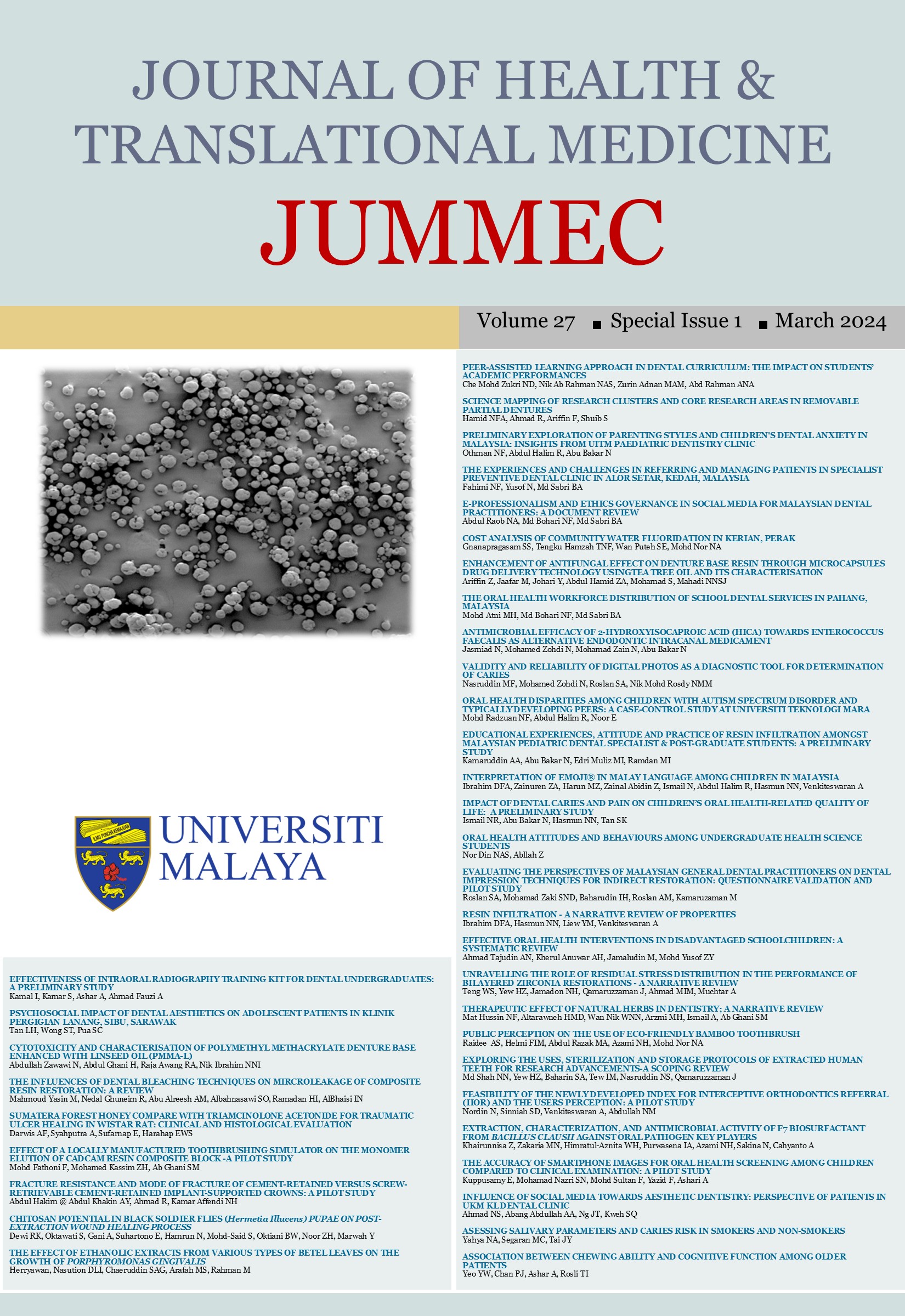EXPLORING THE USES, STERILIZATION AND STORAGE PROTOCOLS OF EXTRACTED HUMAN TEETH FOR RESEARCH ADVANCEMENTS: A SCOPING REVIEW
Received 2024-02-21; Accepted 2024-03-04; Published 2024-03-25
DOI:
https://doi.org/10.22452/jummec.sp2024no1.22Abstract
Extracted human teeth (EHT) have long served as invaluable specimens in dental research, offering valuable insights into dental science and biomaterials. This scoping review aims to document the current uses of EHT in dental research and to identify the sterilisation and storage protocols. The study employed scoping review methods. Relevant databases (PubMed, Scopus, and Science Direct) were searched using the terms “extracted human teeth” and “in-vitro” to identify articles for inclusion. The most recent articles published over five years (2019-2023) and those in English were included. Two reviewers independently conducted the selection process, and the decision was consensually made. A descriptive statistical assessment was performed to analyse the studies involving EHT and the sterilising and storage solutions used. A total of 105 articles were reviewed: Endodontology (32%), Dental Materials (24%), Conservative Dentistry (20%), Prosthodontics (8%), Regenerative Therapy (6%), Oral Biology (5%), Orthodontics (4%), and Periodontology (3%). 71% of the reviewed papers did not report the sterilising and storage methods for EHT. When reported, sodium hypochlorite was most commonly used (15%). However, the concentrations and immersion time in the sterilising solutions were inconsistent. The most frequently used storage solutions to keep EHT from dehydration are saline (11%) and distilled water (10%). In conclusion, extracted human teeth continue to be extensively utilised in dental research. Nonetheless, the reporting and standardisation of sterilisation and storage methods are notably inadequate. A standardised guideline for sterilising and preserving extracted human teeth for various types of research is essential to mitigate variability and promote result uniformity. There is a stark absence of consensus regarding the optimal procedures for storing and sterilising EHT, even when used for the same laboratory investigations and different types of dental research.
Downloads
Downloads
Published
Issue
Section
License
All authors agree that the article, if editorially accepted for publication, shall be licensed under the Creative Commons Attribution License 4.0 to allow others to freely access, copy and use research provided the author is correctly attributed, unless otherwise stated. All articles are available online without charge or other barriers to access. However, anyone wishing to reproduce large quantities of an article (250+) should inform the publisher. Any opinion expressed in the articles are those of the authors and do not reflect that of the University of Malaya, 50603 Kuala Lumpur, Malaysia.


